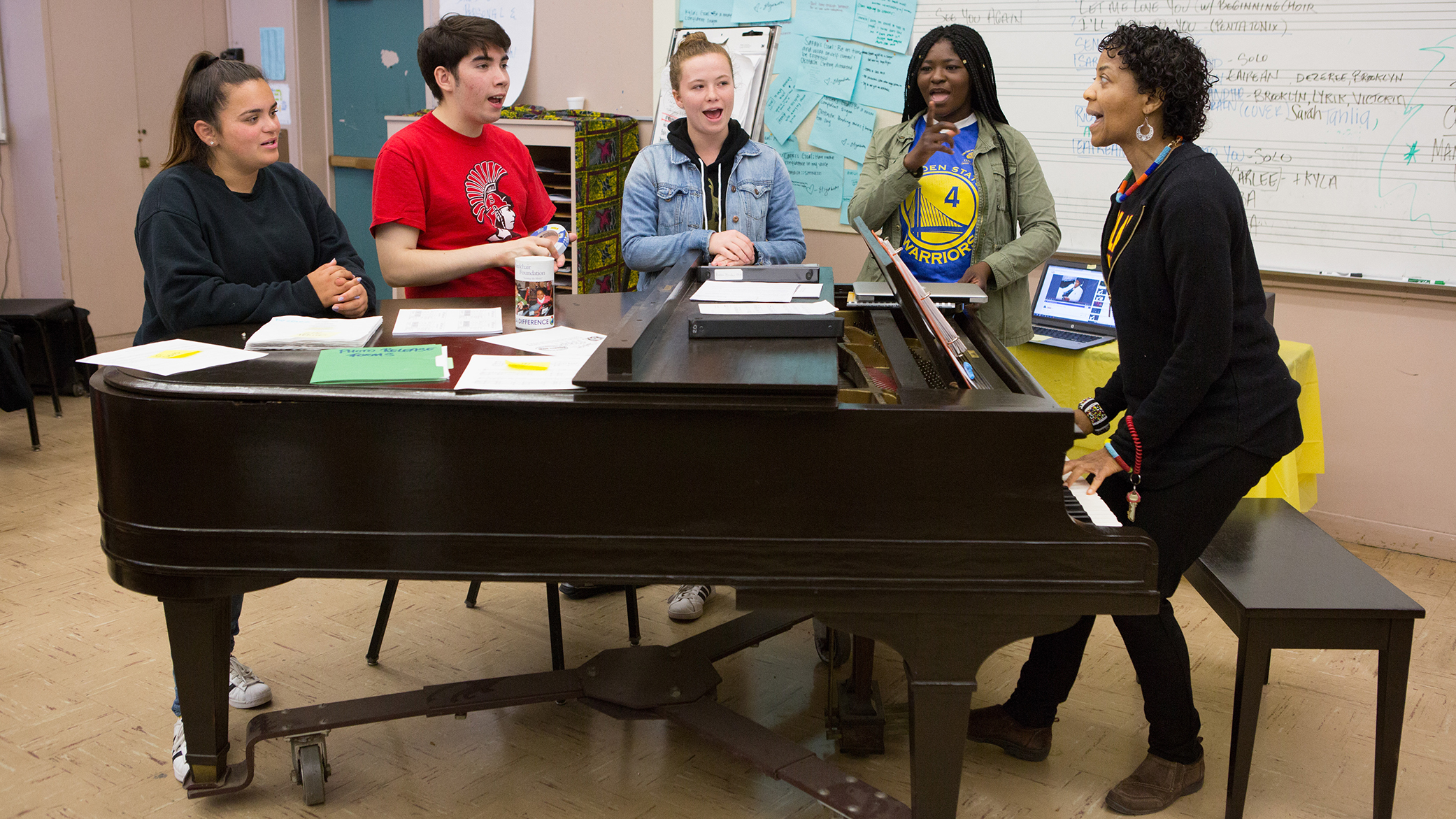Creative license: Strengthening teaching and learning in the visual and performing arts

“Creative license” refers to an artist’s ability to break from historical convention. A poet may stray from grammatical rules or invent new words, while a singer may embellish the melody of a well-known song.
Artistic expansiveness is a core value of the Hewlett Foundation Performing Arts Program, guiding every aspect of our work. The joy, exploration, and wonder of the arts contribute richly to the making of a whole person and to expressing and addressing the greatest challenges and deepest aspirations of our communities. This core value fuels our commitment to supporting equitable access to high-quality arts education opportunities for every young person in the San Francisco Bay Area.
Yet not every TK-12 student in our region receives the opportunity to engage deeply in the visual and performing arts — an opportunity that each deserves. Historically, this has been due to a variety of factors, including funding shortages and a dearth of licensed arts educators throughout the Bay Area and California. However, a new era for arts education in California has begun.
In 2022, California voters passed the Arts and Music in Schools (AMS) Act. This historic initiative enhances arts programs in public schools (from preschool to high school) by providing substantial annual funding for arts education. Nearly $1 billion was allocated in the policy’s first year, with funds set aside for licensed arts educators, community-based organizations, and teaching artists, who play vital roles in high-quality arts education. This marks a major step forward for students in the Bay Area and throughout the state.
However, despite increased funding, California still lacks the number of licensed arts educators essential to successfully implementing the AMS Act and fulfilling the obligation to provide visual and performing arts education opportunities to every student. A key question persists: Precisely how many new credentialed teachers will be needed to address this gap?
To address this question, the Hewlett Foundation’s Performing Arts Program recently commissioned SRI Education to conduct a policy brief — the first of its kind to use a defined methodology — that offers a clear estimate of the required number of new arts educators to effectively implement the AMS Act.
In summary, researchers at SRI have estimated that California will need to hire an additional 5,457 arts teachers to meet current demands, with each region throughout the state having unique needs. This analysis provides a clear picture of not just how many new teachers each region can afford but also where the teacher shortage is most acute.
The following graphic shows, by region, approximately how many new teachers will be required to ensure the success of the AMS Act:

California regional map featuring the number of new full-time equivalent teachers needed to fulfill the AMS Act. (Map courtesy of California County Superintendents)
Creative solutions for addressing the arts teacher shortage
A critical step toward ensuring that every Bay Area student has equitable access to high-quality arts education is the successful implementation of the AMS Act. This will require expanding arts teacher training and recruitment across California. Based on its findings, SRI recommends that this work include the following actions:
- Establish new programs: Develop additional teacher preparation programs, especially in regions with limited options and in under-represented disciplines like dance and theater.
- Expand credentialing: Increase the availability of arts teacher credentials to align with the growing demand and provide financial aid to students who might not otherwise be able to afford a teaching credential.
- Forge partnerships: Encourage collaboration between Local Education Agencies and higher education institutions to anticipate and meet future needs.
- Create pathways: Build clear pathways for high school and community college students to enter the arts education workforce in their local communities.
- Raise awareness: Promote the teaching profession by making sure artists and recent college graduates are aware of the new demand for arts teachers.
By addressing these, policymakers, funders, school administrators, institutions of higher education, and arts organizations can ensure California has the qualified educators needed to fulfill the promise of the AMS Act.
What’s next
The AMS Act presents a once-in-a-lifetime opportunity for those who have long understood the power of arts education to roll up their sleeves to ensure creativity and artistic expression are well-supported elements of every student’s education. SRI’s study is one example of how funders and researchers can aid the field in better identifying and addressing the opportunities and challenges of implementing this landmark measure. We encourage readers to learn more in SRI Education’s full policy brief.
We hope the study helps pave the way for stronger implementation and invites others — educators, artists, administrators, advocates, and funders — to get involved. Together, we can ensure all of California’s students fully benefit from the expansive power of the arts.



